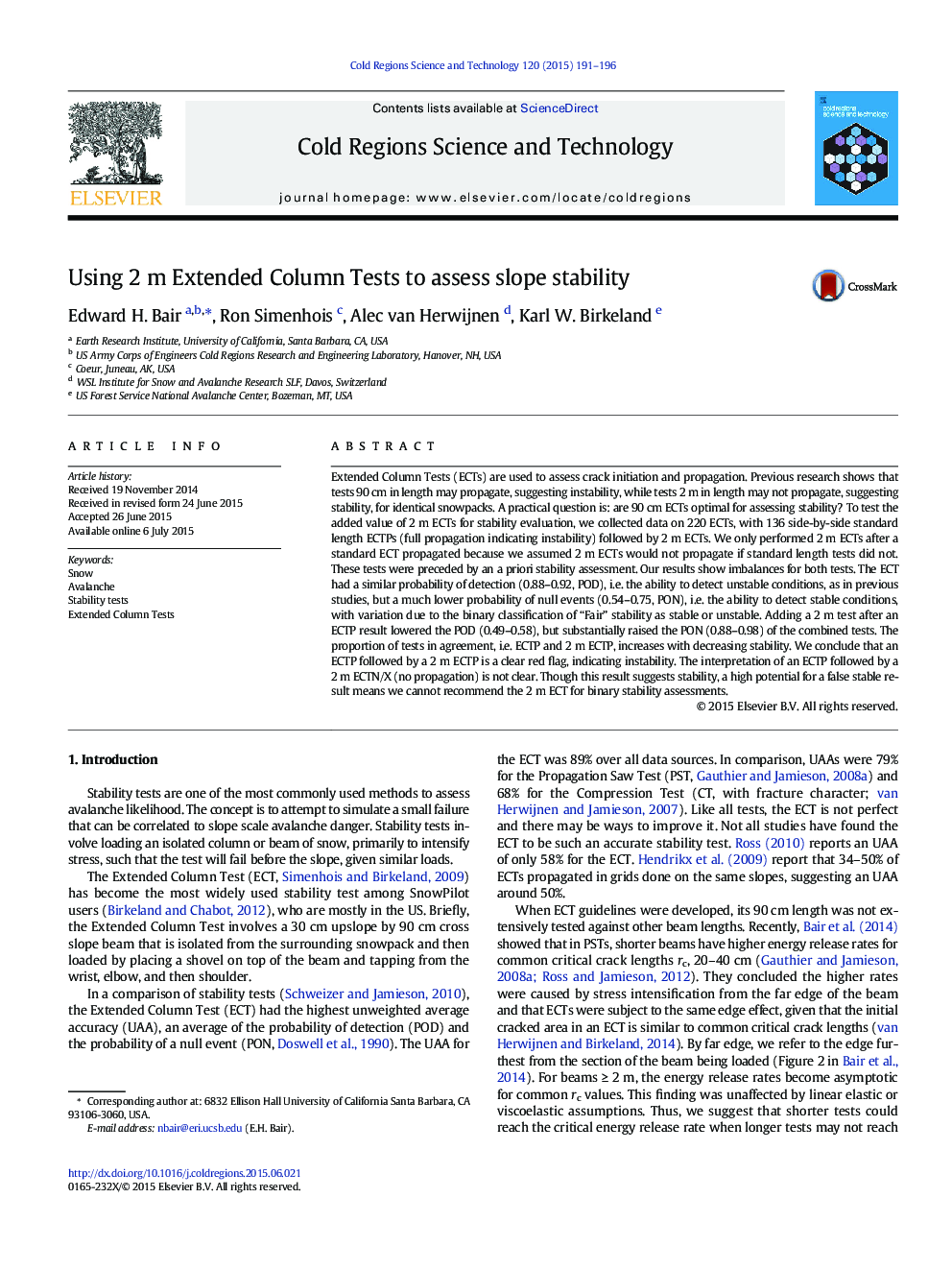| Article ID | Journal | Published Year | Pages | File Type |
|---|---|---|---|---|
| 6426727 | Cold Regions Science and Technology | 2015 | 6 Pages |
Abstract
Extended Column Tests (ECTs) are used to assess crack initiation and propagation. Previous research shows that tests 90Â cm in length may propagate, suggesting instability, while tests 2Â m in length may not propagate, suggesting stability, for identical snowpacks. A practical question is: are 90Â cm ECTs optimal for assessing stability? To test the added value of 2Â m ECTs for stability evaluation, we collected data on 220 ECTs, with 136 side-by-side standard length ECTPs (full propagation indicating instability) followed by 2Â m ECTs. We only performed 2Â m ECTs after a standard ECT propagated because we assumed 2Â m ECTs would not propagate if standard length tests did not. These tests were preceded by an a priori stability assessment. Our results show imbalances for both tests. The ECT had a similar probability of detection (0.88-0.92, POD), i.e. the ability to detect unstable conditions, as in previous studies, but a much lower probability of null events (0.54-0.75, PON), i.e. the ability to detect stable conditions, with variation due to the binary classification of “Fair” stability as stable or unstable. Adding a 2Â m test after an ECTP result lowered the POD (0.49-0.58), but substantially raised the PON (0.88-0.98) of the combined tests. The proportion of tests in agreement, i.e. ECTP and 2Â m ECTP, increases with decreasing stability. We conclude that an ECTP followed by a 2Â m ECTP is a clear red flag, indicating instability. The interpretation of an ECTP followed by a 2Â m ECTN/X (no propagation) is not clear. Though this result suggests stability, a high potential for a false stable result means we cannot recommend the 2Â m ECT for binary stability assessments.
Keywords
Related Topics
Physical Sciences and Engineering
Earth and Planetary Sciences
Earth and Planetary Sciences (General)
Authors
Edward H. Bair, Ron Simenhois, Alec van Herwijnen, Karl W. Birkeland,
